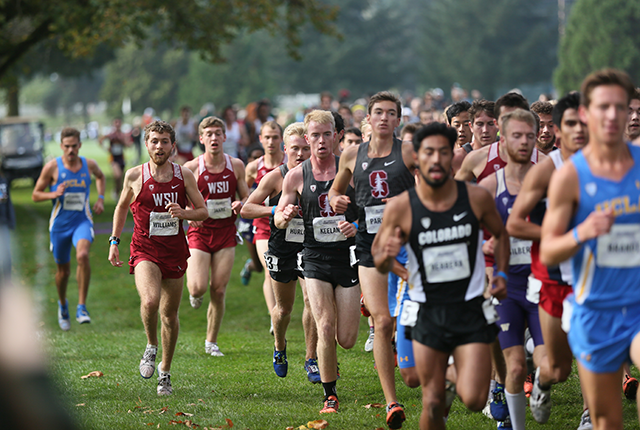
Study: Suicides among college athletes doubled in 20 years
While annual mortality has been similar in this population, death by suicide rose sharply as other causes of death declined.Media Contact: Brian Donohue - 206-543-7856, bdonohue@uw.edu

The number of U.S. collegiate athletes who died by suicide doubled between 2002 and 2022, according to a study published today, April 4, in the British Journal of Sports Medicine.
Suicide is now the second most common cause of death, after accidents, in this group.
“We found that the annual mortality rate in this population has been pretty similar over the last 20 years, but suicide death is accounting for a greater portion of the total," said Bridget Whelan, the lead author. She is a research scientist in family medicine at the University of Washington School of Medicine in Seattle.
The researchers analyzed deaths occurring between July 1, 2002, and June 30, 2022, among NCAA athletes who competed in at least one varsity sport at Division I, II or III institutions. Deaths were broadly categorized as accident, murder, suicide, unintentional drug/alcohol overdose or medical cause.
During the 20-year study span, 1,102 athletes died, 128 (11.5%) of whom died by suicide, the authors reported. Athletes who died by suicide were 20 years old, on average. The proportion of suicide deaths doubled from the first 10 years of the study (just over 7.5%) to the second 10 years (just over 15%) while other causes of death in this population dropped.
Deaths by suicide involved males 77% of the time. Among males, the yearly incidence of suicide more than doubled during the study span, from 31 in the first 10 years to 67 in the second 10 years. Among females, death by suicide increased from 2010-11 onward, from nine to 21.
The cause of each athlete’s death, as well as details of age, race, and sporting discipline, were ascertained through online media reports, obituaries, reviews of postmortem examinations and other official documents.
“Athletes are generally thought of as one of the healthiest populations in our society, yet the pressures of school, internal and external performance expectations, time demands, injury, athletic identity and physical fatigue can lead to depression, mental health problems and suicide,” the authors wrote.
Division I college athletes, at least, often have access not only to coaches but also to doctors, trainers and sports psychologists, Whelan said. The researchers had thought this broader net of support would have a protective effect.
“We didn’t anticipate that we’d see the increase in suicide rate that we did,” she said.
The researchers also were surprised by the finding that the two groups most affected by suicide were cross-country athletes and track-and-field athletes, Whelan offered. She suggested that the individual nature of those competitions, in contrast with more overtly team-oriented sports such as football and soccer, might amplify those athletes’ feeling of personal disappointment in a defeat.
Whelan pointed to the rise of social media apps as a potential contributing factor to the rise in athletes’ death by suicide. These communications mechanisms allow athletes to see themselves in public much more than was the case in 2001—and not always for the better.
“People celebrate the wins, but athletes’ performances can be picked apart. One negative comment can stand out over a thousand positives,” she said.
Colleges and universities, as well as the NCAA, have mounted an effort in recent years to address student athletes’ mental health, encouraging screenings and attempting to put it on par with physical well-being.
“But we’re still seeing athletes meet this extreme, unfortunate end. Each of these individuals is a human who, perhaps with greater support, would still be here,” Whelan added. “The job of improving prevention is definitely not done.”
The researchers acknowledged limitations, including that the analysis relied on third-party reports in the absence of any mandatory reporting system for athlete deaths, so the true incidence of suicide deaths in this population might be higher.
Related:
– Text adapted from the news release of the British Journal of Sports Medicine. Display photo by jenaragon94 licensed under Creative Commons Attribution 2.0 Generic license.
For details about UW Medicine, please visit https://uwmedicine.org/about.